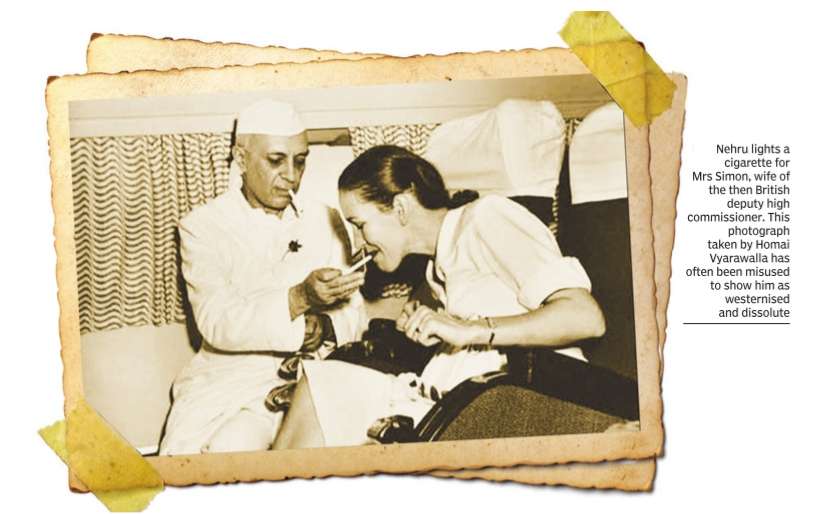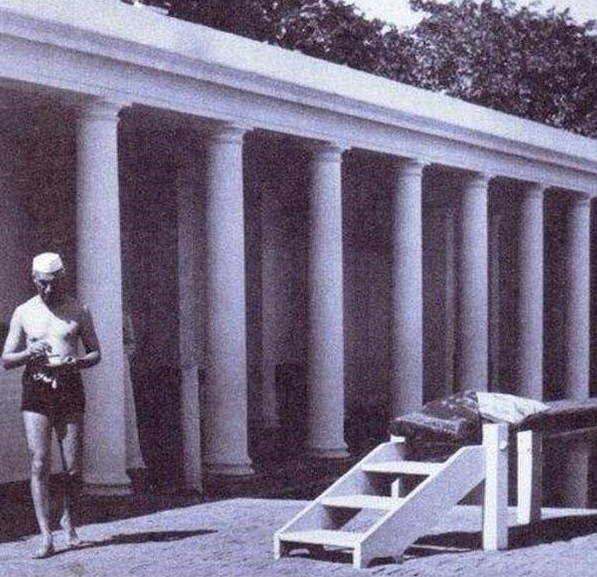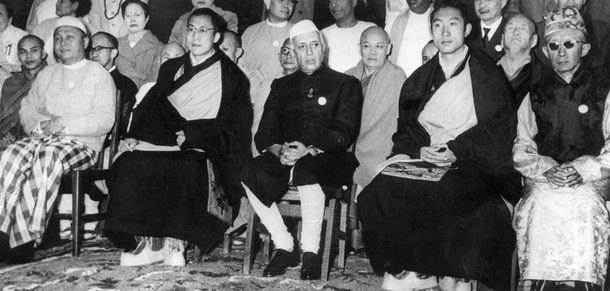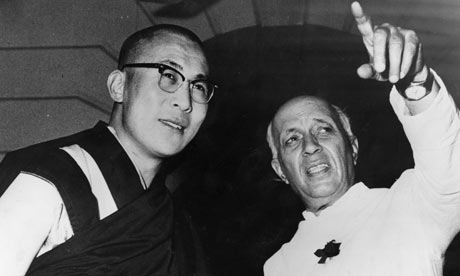Pt Jawaharlal Nehru
(→Securing border with China) |
|||
| Line 6: | Line 6: | ||
[[Category:Government |N]] | [[Category:Government |N]] | ||
'''This page is under construction''' | '''This page is under construction''' | ||
| + | |||
=Securing border with China= | =Securing border with China= | ||
[[File: jln tryst.jpg| On the midnight of 14/ 15 August 1947 Jawaharlal Nehru, who had just been sword in as India's first prime minister, delivered his famous 'tryst with destiny' speech at Parliament House in New Delhi |frame|500px]] | [[File: jln tryst.jpg| On the midnight of 14/ 15 August 1947 Jawaharlal Nehru, who had just been sword in as India's first prime minister, delivered his famous 'tryst with destiny' speech at Parliament House in New Delhi |frame|500px]] | ||
| Line 37: | Line 38: | ||
Something in our subconscious racial selves? Some forgotten memories of a thousand years ago? Or just common misfor tune?“ Right after jotting these lines, he added, “wishful thinking“. These two words must have echoed repeatedly as Nehru tried to come to terms with geopolitical realities ex posed by the 1962 war. | Something in our subconscious racial selves? Some forgotten memories of a thousand years ago? Or just common misfor tune?“ Right after jotting these lines, he added, “wishful thinking“. These two words must have echoed repeatedly as Nehru tried to come to terms with geopolitical realities ex posed by the 1962 war. | ||
| + | |||
| + | =Canards about Nehru= | ||
| + | [[File: Pt. Jawaharlal Nehru and Mrs. Simon, wife of then British Deputy Commissioner.jpg|Pt. Jawaharlal Nehru and Mrs. Simon, wife of then British Deputy Commissioner; Picture courtesy: [http://epaperbeta.timesofindia.com/Article.aspx?eid=31808&articlexml=THE-NEHRU-YOU-DONT-KNOW-15052016027014 ''The Times of India''], May 15, 2016|frame|500px]] | ||
| + | [[File: On youtube, a search for Pt. Jawaharlal Nehru.jpg|On youtube, a search for Pt. Jawaharlal Nehru throws smear after smear; Picture courtesy: [http://epaperbeta.timesofindia.com/Article.aspx?eid=31808&articlexml=THE-NEHRU-YOU-DONT-KNOW-15052016027014 ''The Times of India''], May 15, 2016|frame|500px]] | ||
Revision as of 21:38, 3 November 2016
This page is under construction
Securing border with China
Nehru was torn between loving Chinese civilisation & securing Indian border
Tansen Sen
Jawaharlal Nehru's first noteworthy encounter with the Chinese took place at the World Congress of Oppressed Peoples held in Brussels in 1927. The Chinese representatives, which included Sun Yat-sen's wife Soong Ching-ling, greatly impressed Nehru. Influenced by a new pan-Asianist discourse he started forming his views about a civilisational affinity between India and China.
He frequently voiced his sympathies for the Chinese fighting against invading Japanese forces and initiated a medical mission to China that included Dwarkanath Kotnis. He was a key patron of Cheena Bhavan in Shantiniketan and also saw great potential in developing trade and industrial relations; strongly advocating, for example, commerce through the newly built Burma Road.
The watershed moment in Nehru's relationship with China came at the Asian Relations Conference in Delhi in March-April 1947, where differences between India and China on Tibet became apparent when the organising committee invited Tibet as an independent country. China launched a strong protest with the interim Indian government. Chiang Kai-shek only agreed to send a delegation after Nehru assured the Chinese that the conference would deal primarily with cultural and economic matters, and that Tibet's status would not be raised.
Nehru's assurances were questioned, however, when the Chinese delegation found a map of Asia depicting Tibet as a separate country and the Tibetan flag displayed at the Conference. The Chinese threatened to withdraw and never trusted Nehru again.
In November-December 1949, the former Kuomintang ambassador in Delhi Lo Chia-lun sug gested to Chiang Kai-shek that the Indian PM might recognise the newly-established Communist regime in China in exchange for their acceptance of the 1914 Simla Agreement. However, the Communist regime was distrustful of Nehru, describing him as a “stooge“ and “running dog“ of British and American imperialists.
During the 1950s Nehru was torn between his love for Chinese civilisation, his empathy towards the Tibetan people, and the need to secure Indian territories. Further, Nehru did not heed Sardar Patel's warning in 1950 about the implications of future Chinese military expansion into Tibet.
Perhaps through the rhetoric of a bhai-bhai relationship, the Panchsheel Agreement of 1954 recognising Tibet as a region of China, and the handholding of Zhou Enlai at the 1955 Bandung Conference, Nehru hoped to convince China of India's stand on border areas. He may even have thought that the dual track of rhetoric and the so-called “forward policy“ were conducive. Indeed, he remained committed to a peaceful relationship, unwaveringly supporting the PRC's entry into the United Nations.
In this context, his decision to intern Chinese migrants in India when the relationship between the two countries deteriorated in 1959 cannot be comprehend ed. The punitive actions against the “Chinese Indians“ suggest an acknowledgement of agonising failure.In 1943, in jail, Nehru wrote, “What is there that draws China to India and India to China?
Something in our subconscious racial selves? Some forgotten memories of a thousand years ago? Or just common misfor tune?“ Right after jotting these lines, he added, “wishful thinking“. These two words must have echoed repeatedly as Nehru tried to come to terms with geopolitical realities ex posed by the 1962 war.
Canards about Nehru






